Three Delicious and Sparkling Days in Paris – 2024
Posted on July 12,2024 By John and Linda Compisi
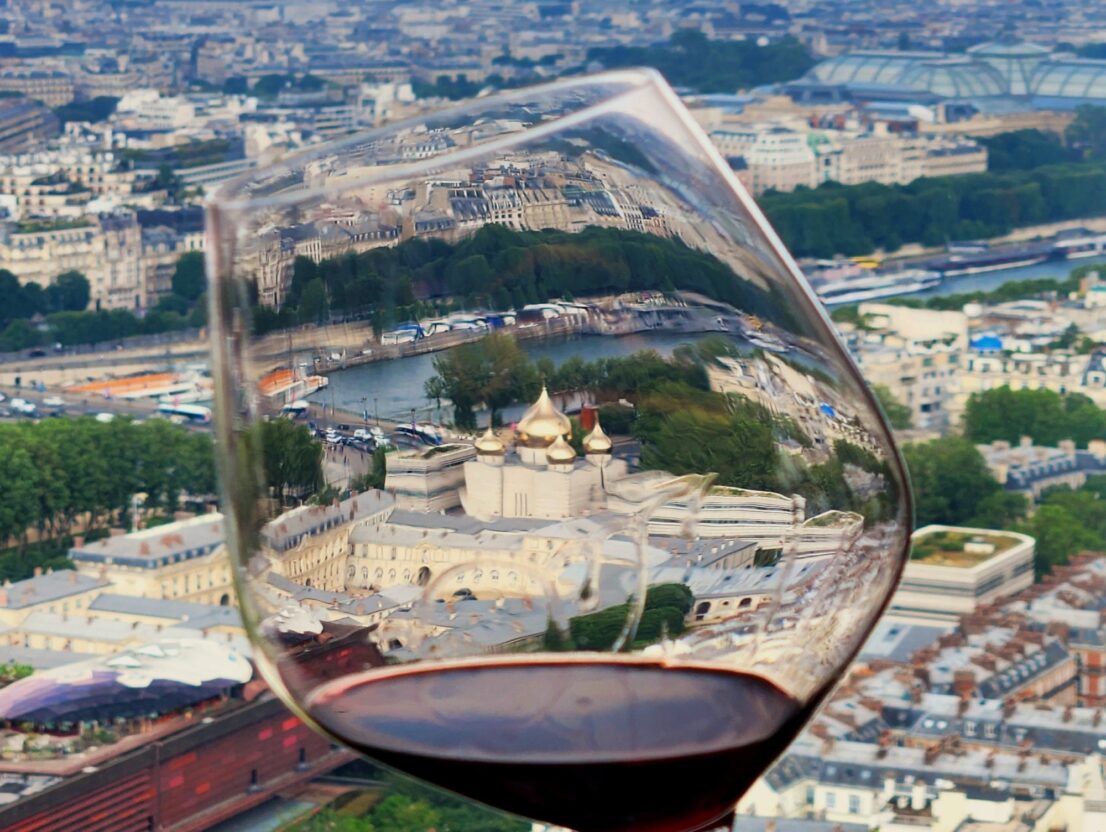
Paris is called the City of Lights and for a very good reason. In mid-June, while the city was preparing for the 2024 Summer Olympic Games, we snuck in for a brief visit on our way to a 5-day wine tour in Bordeaux. We’ll tell you about that adventure in a future post. Paris was aglow with Olympic Rings, clean streets and heightened security.
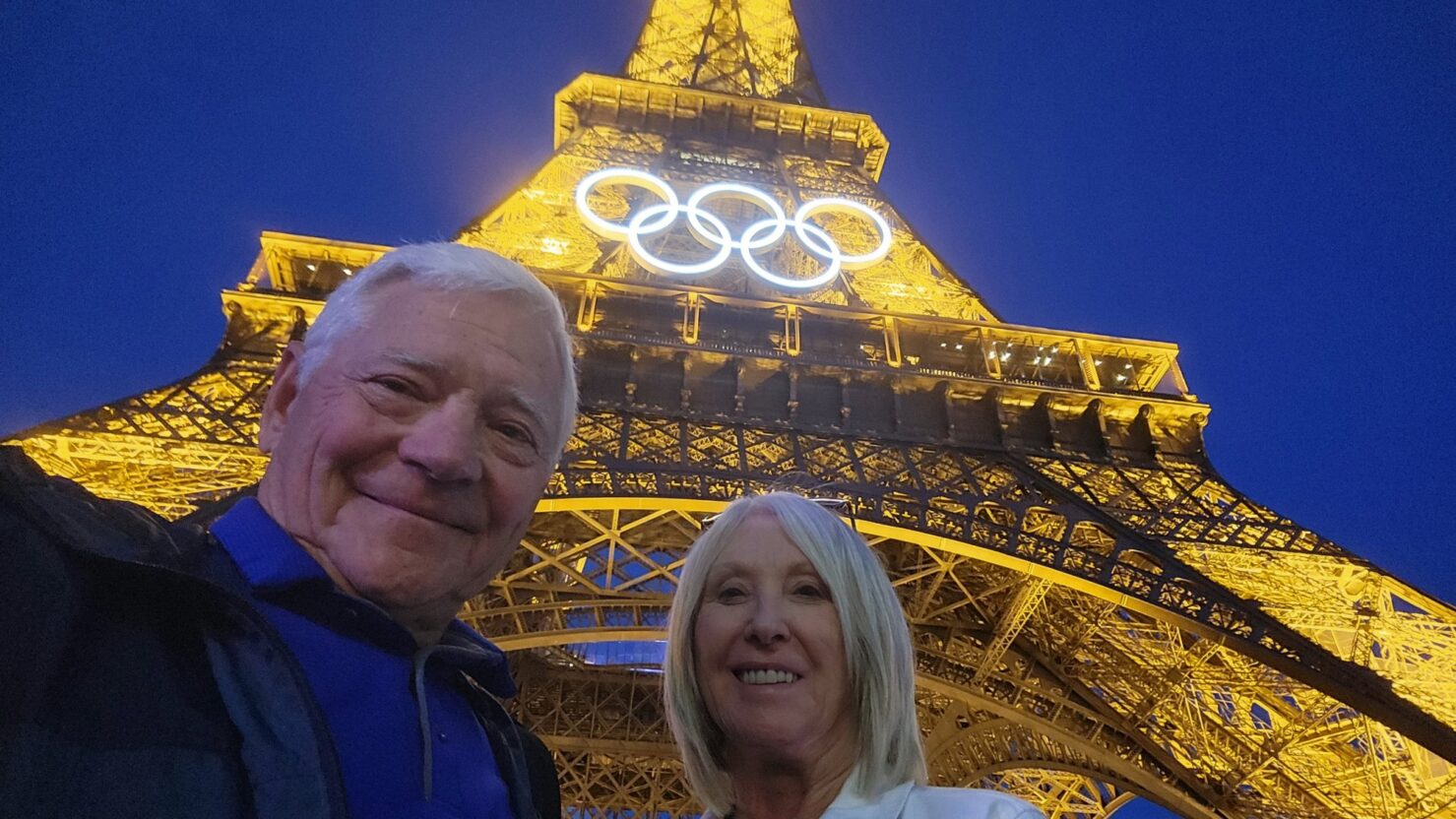
This was not our first trip to Paris and will certainly not be the last. We haven’t been to the City of Love as a couple for a very long time. (You might want to read Linda’s, ‘My Trip of a Lifetime’ from her recent visit in April 2022.)
The highlights of our brief visit included a visit to the d’Orsay Museum, a tour of the Eiffel Tour, a walk down the Avenue des Champs-Élysées, dining at a Michelin starred restaurant and a day trip to Champagne. Wow…exhausted!
Musée d’Orsay – Valéry Giscard d’Estaing
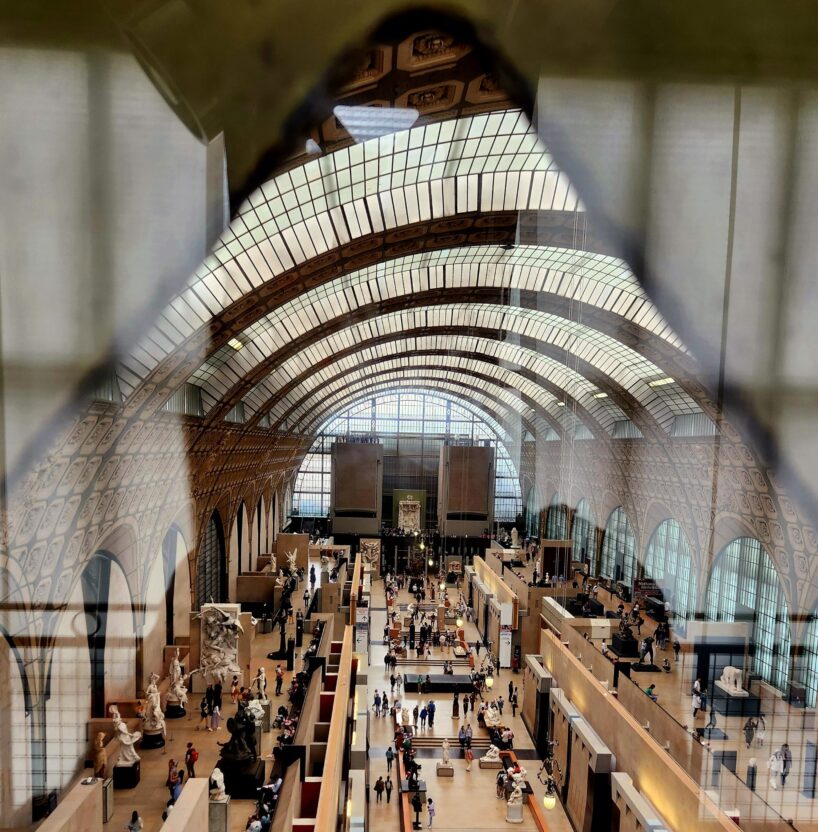
The d’Orsay is one of the most popular museums in the ‘City of Art and Culture’. The Musée is located on the Left Bank of the Seine and is housed in the former Gare d’Orsay, a Beaux-Arts railway station built between 1898 and 1900 and very beautiful in its own right. Although officially renamed to honor former French President Valéry Giscard d’Estaing in 2021, it remains the d’Orsay to all. General admission online is about €16 and €14 at the museum. We selected the audio tour using the self-paced devices for rent at about €10 each.
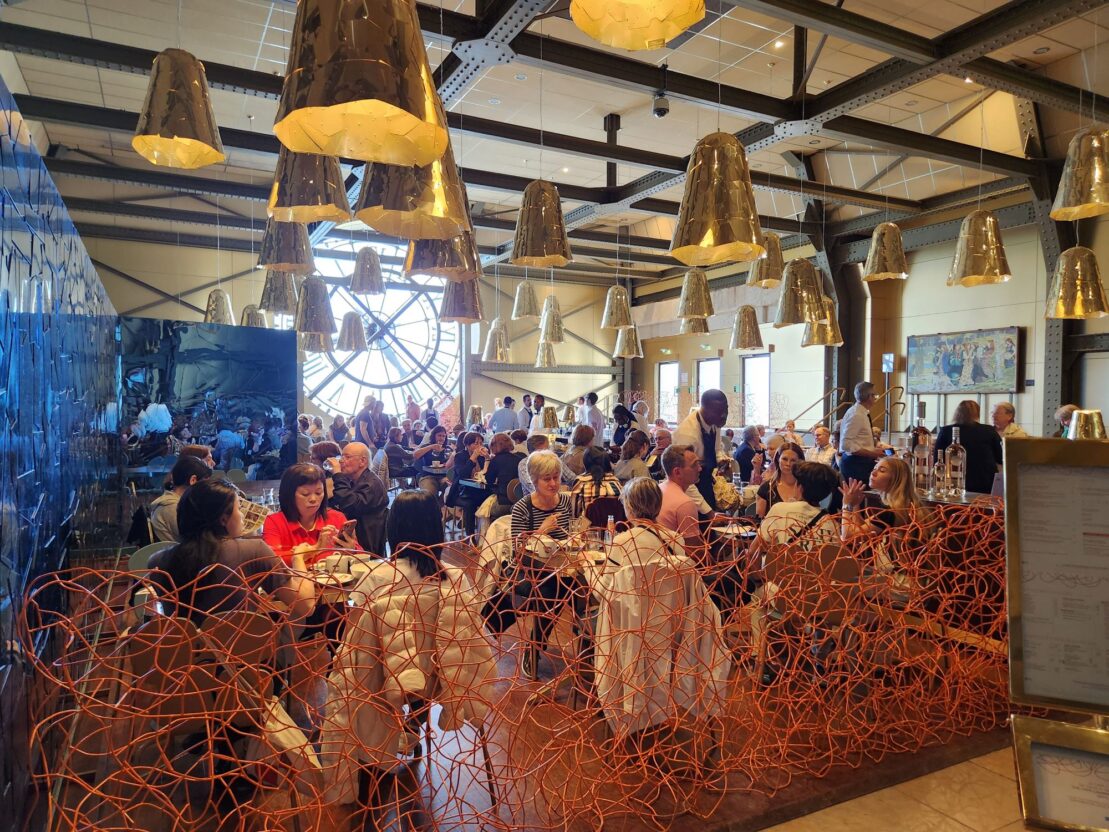
The d’Orsay houses the largest collection of Impressionist and post-Impressionist masterpieces in the world, by painters including Claude Monet, Édouard Manet, Degas, Renoir, Cézanne, Gauguin, and Van Gogh. Our favorite artists were Monet, Van Gogh and Gauguin.
Le Jules Verne – Two Michelin Stars
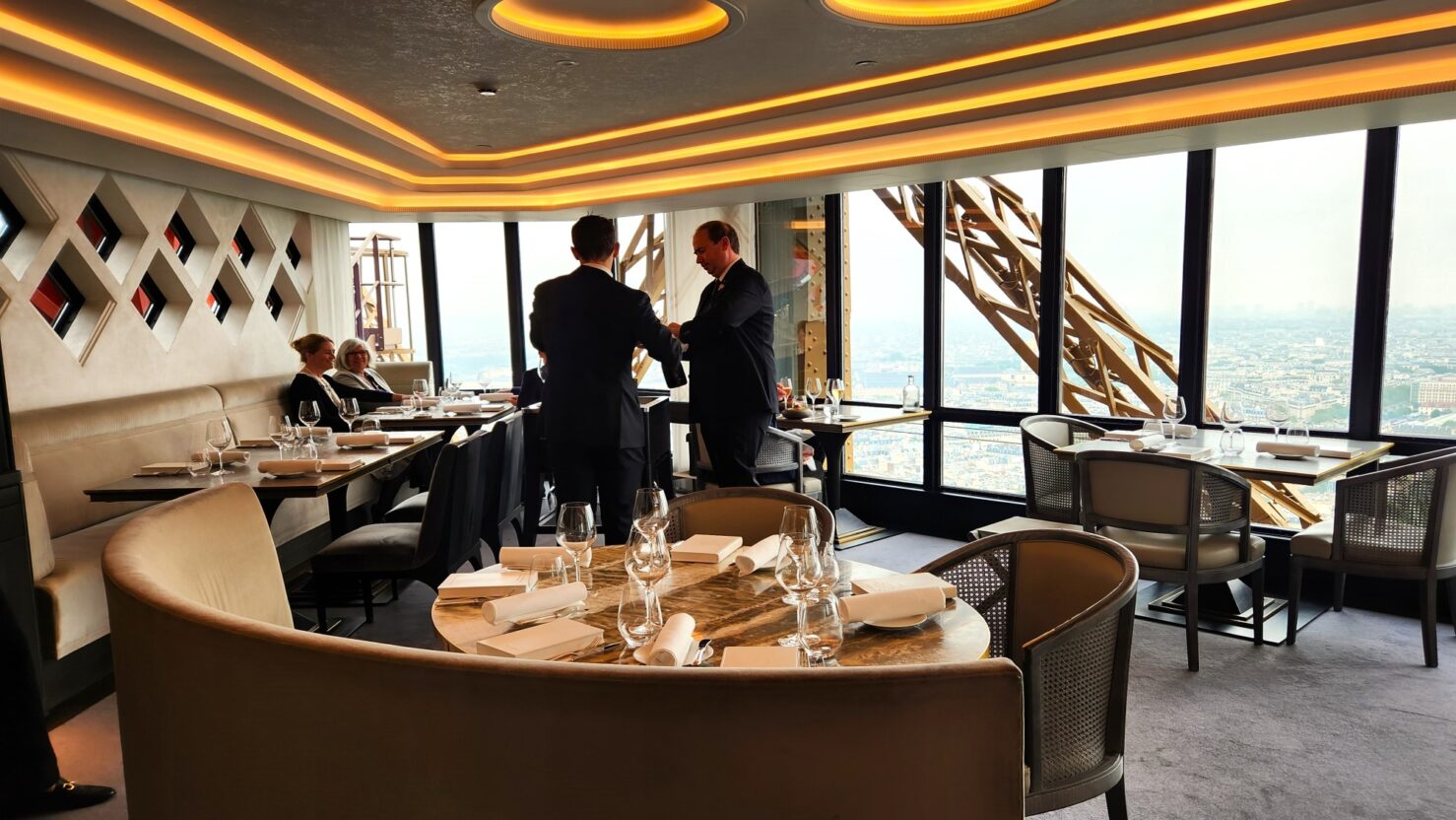
Construction completed in 1983, the Jules Verne has earned Michelin-Stars with all three of its successive Chefs, Alain Reix, Alain Ducasse and, since October 2018, with Triple Michelin-starred Chef Frédéric Anton. At the helm, Anton has continued the tradition of creating cuisine in keeping with the soaring elegance of the Iron Lady.
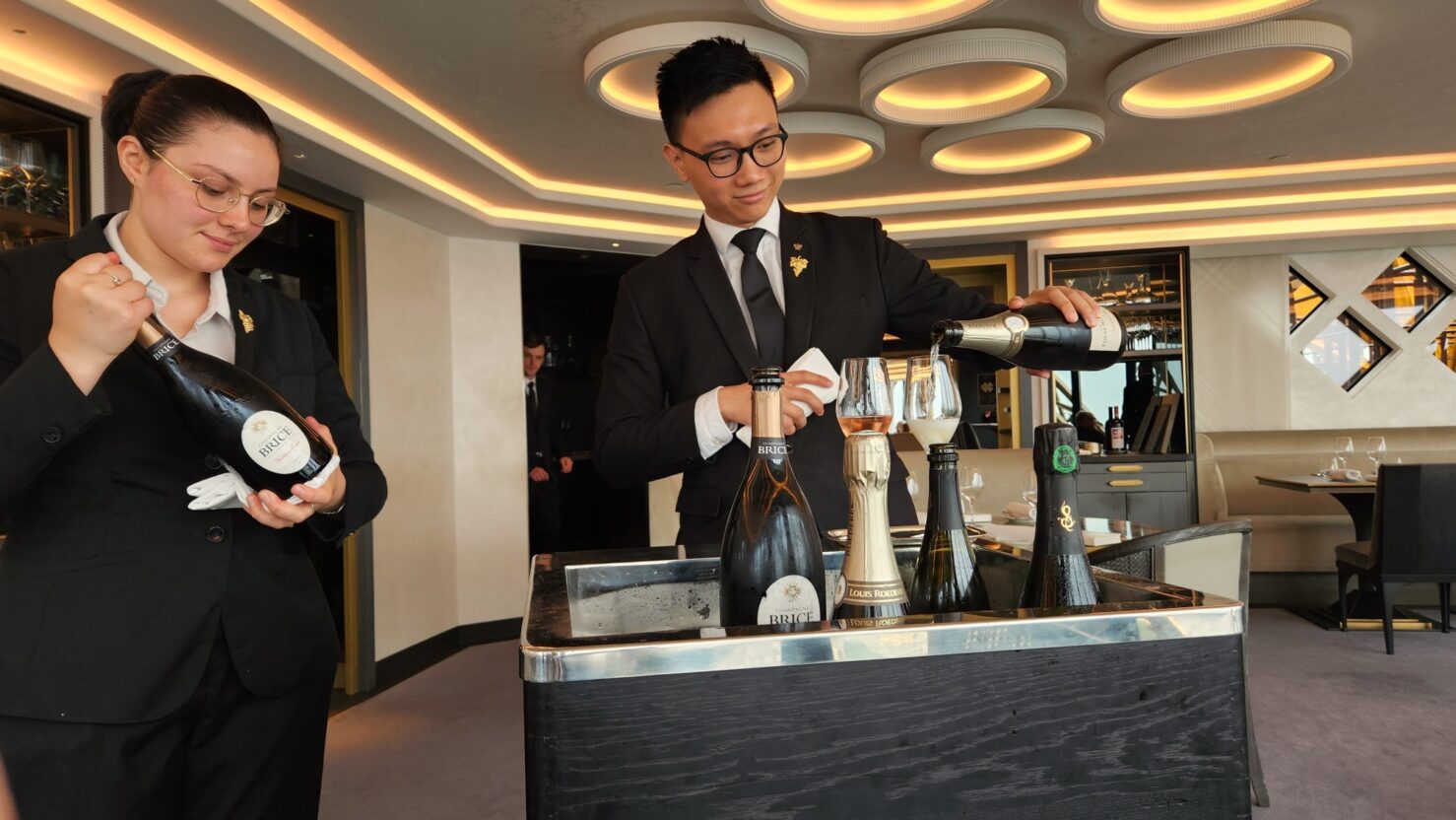
We had reserved a 1pm luncheon, perhaps a more economical way to experience this exemplification of haute cuisine. We were not disappointed. From the moment we were greeted at the ground level and escorted personally to the elevator and up to the 3rd level 125 meters (~400’ above the ground), we were treated as royalty, or better, special friends of royalty.
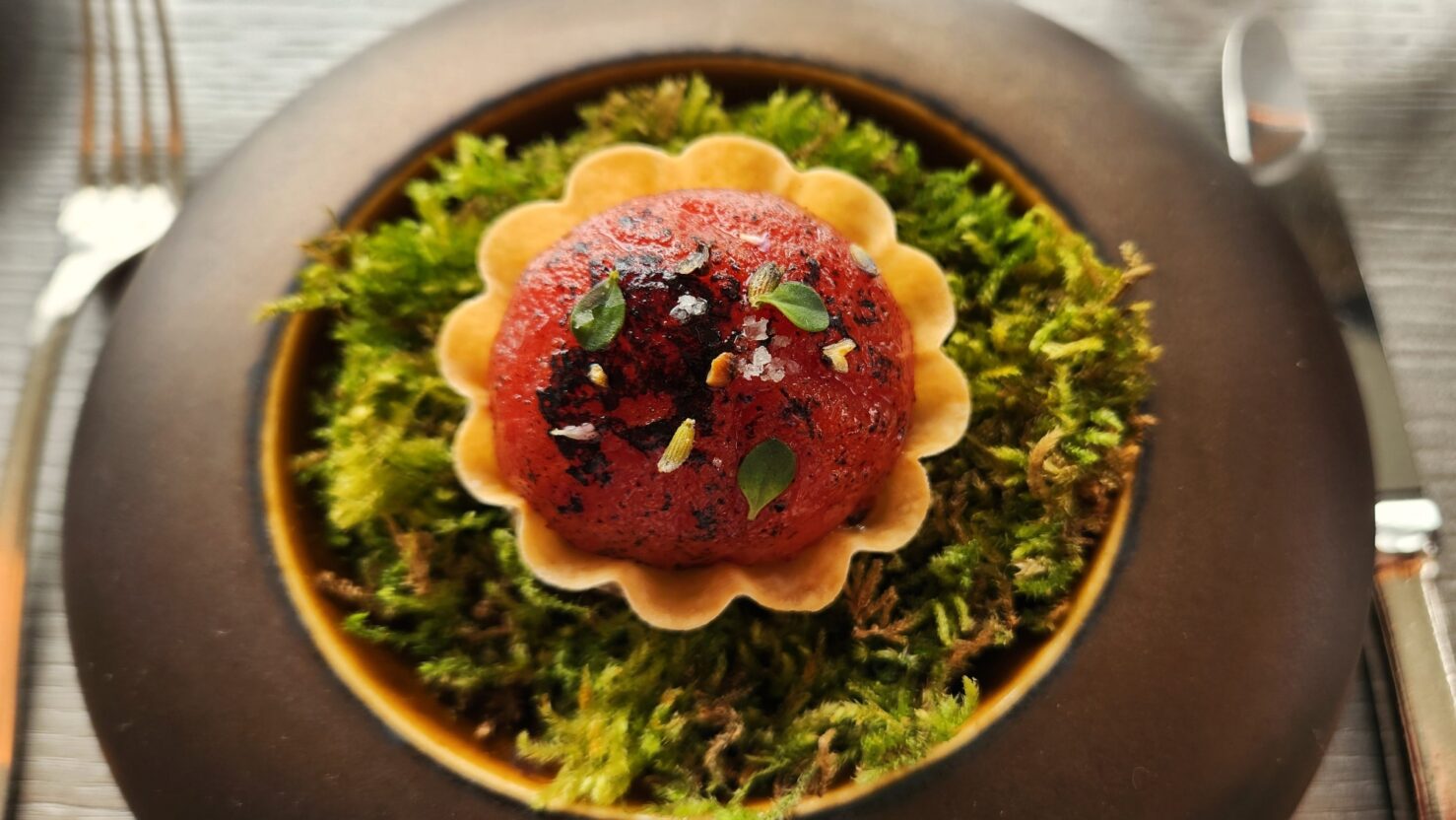
Of course, we ordered glasses of Champagne to begin this culinary adventure that lasted three and a half hours. No, Not Kidding!! The meal we chose was the 3 course pre fixe menu at about €180 per person. The menu included two options. The surprises included at least 3 different amuse bouche throughout the experience. Each course, including the amuse bouche, was beautiful, seductive, flavor-laden and astonishingly satisfying. Off the charts! Bon travail Chef!!!
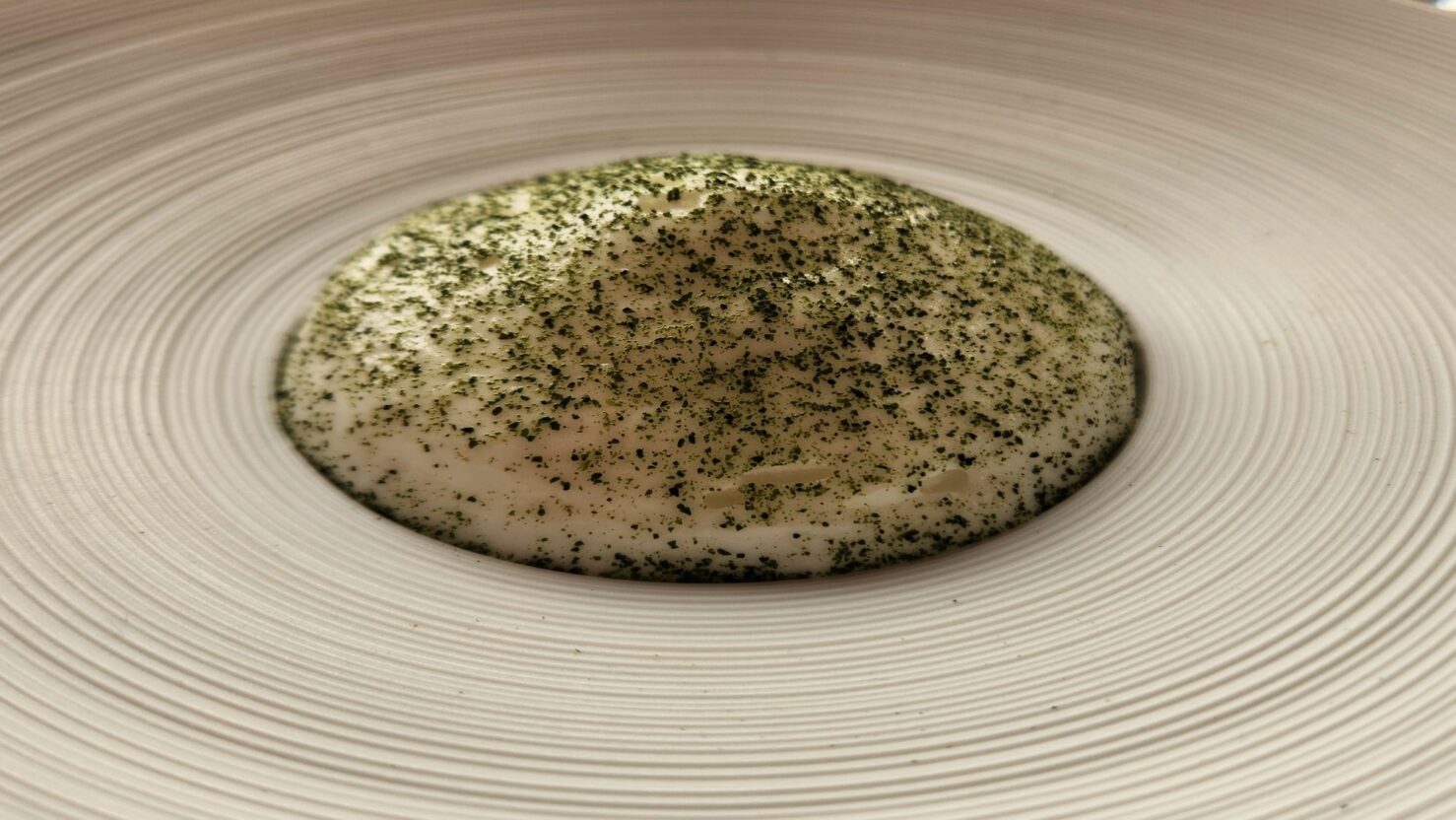
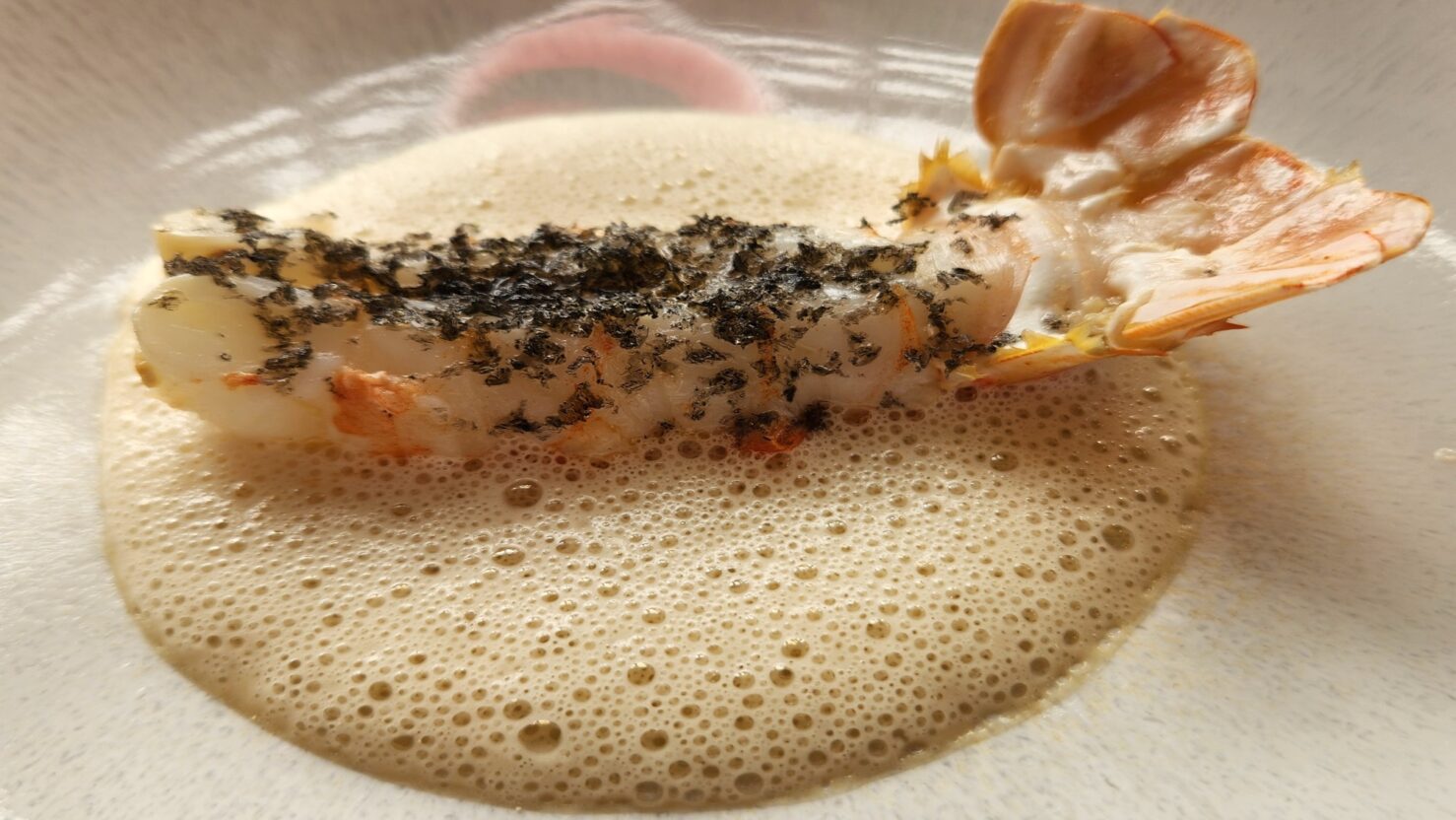
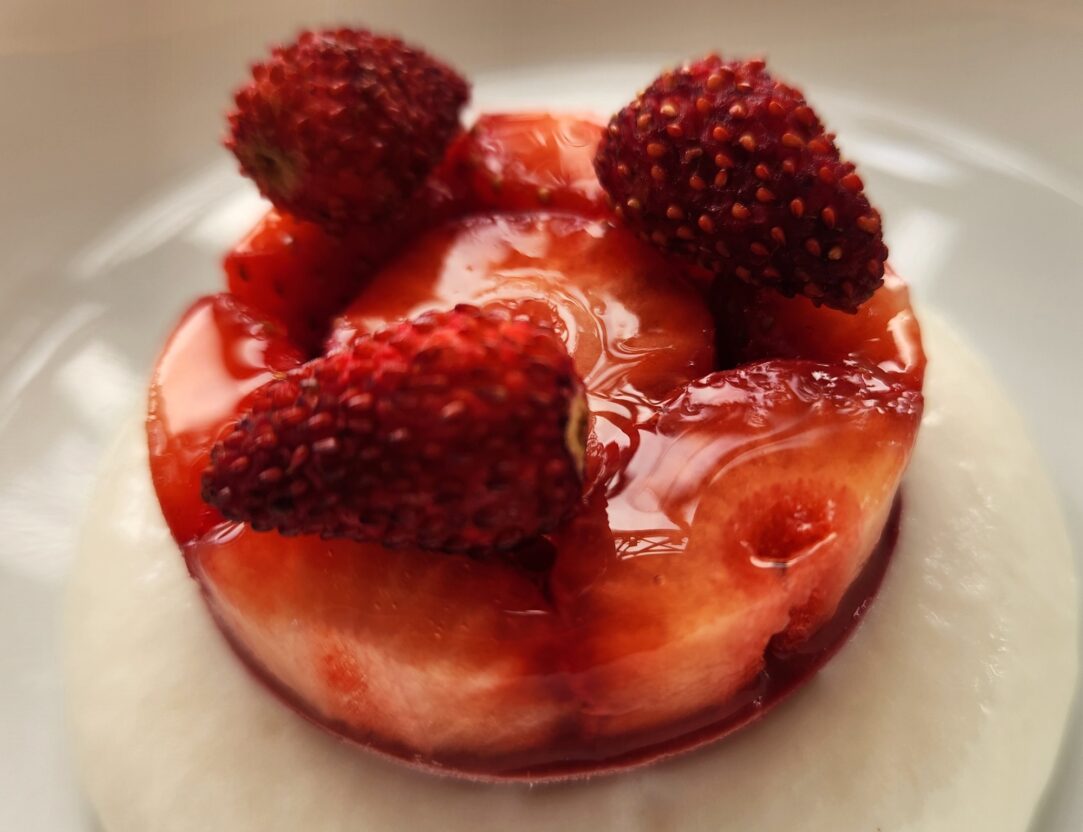
Alongside the fantastic food was the exquisite service from the maître d ’maison, to the sommelier to the wait staff. Synchronized and without fault as they delivered plate after plate and allowing us the perfect amount of alone time to enjoy each dish and each other’s company. The views during this daytime were eye popping. We witnessed the night time views later in the evening during our Eiffel Tower Tour.

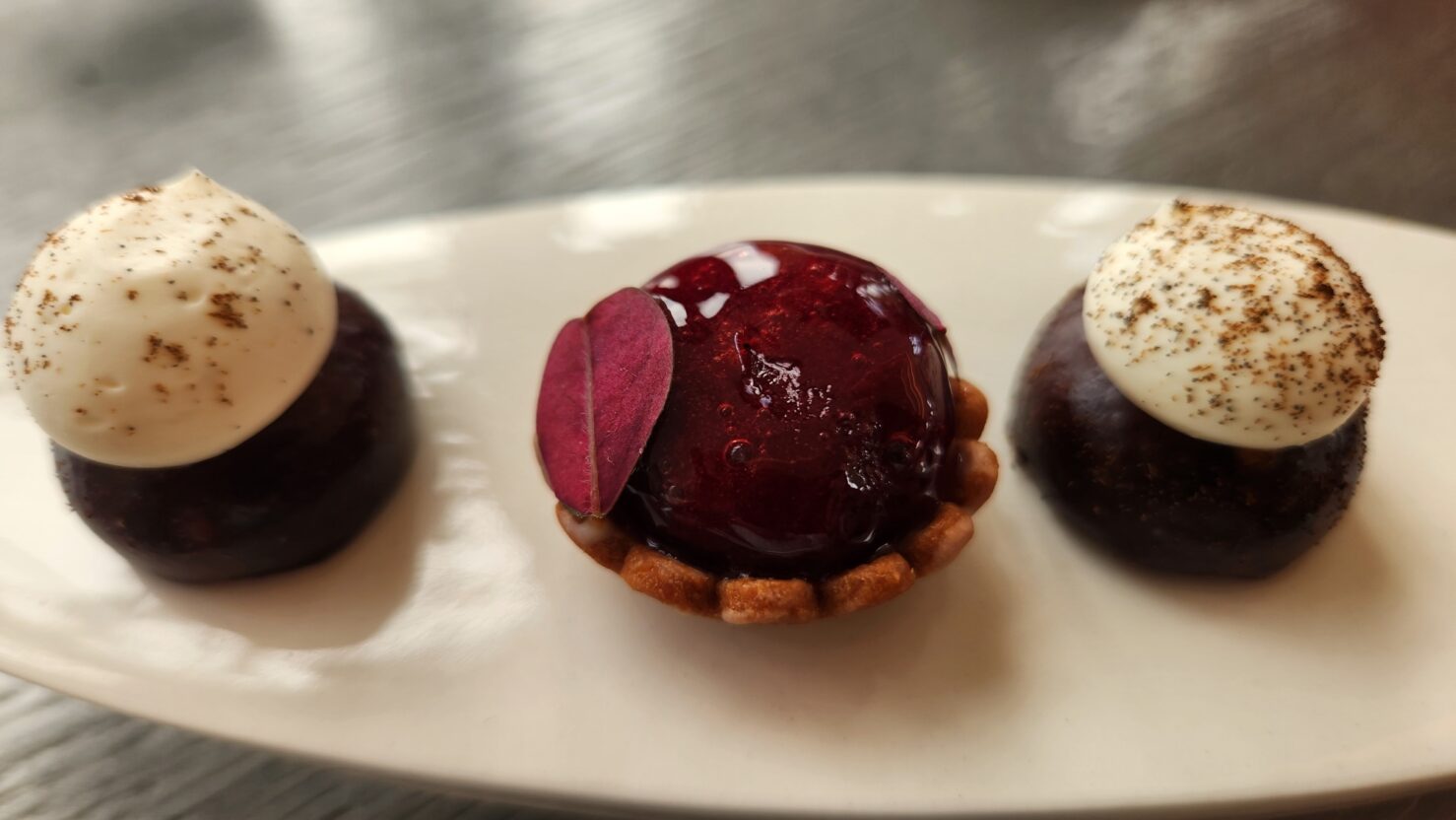
All in all, Le Jules Verne was very worthy of the cost of admission, in fact, for us, priceless.
Tour Eiffel – the Iron Lady
The tour we reserved for the Eiffel Tower was via Viator, a Trip Advisor operation. Our tour was 90 minutes. We gathered about a block away in front of a convenience story with our group of about 12 people.
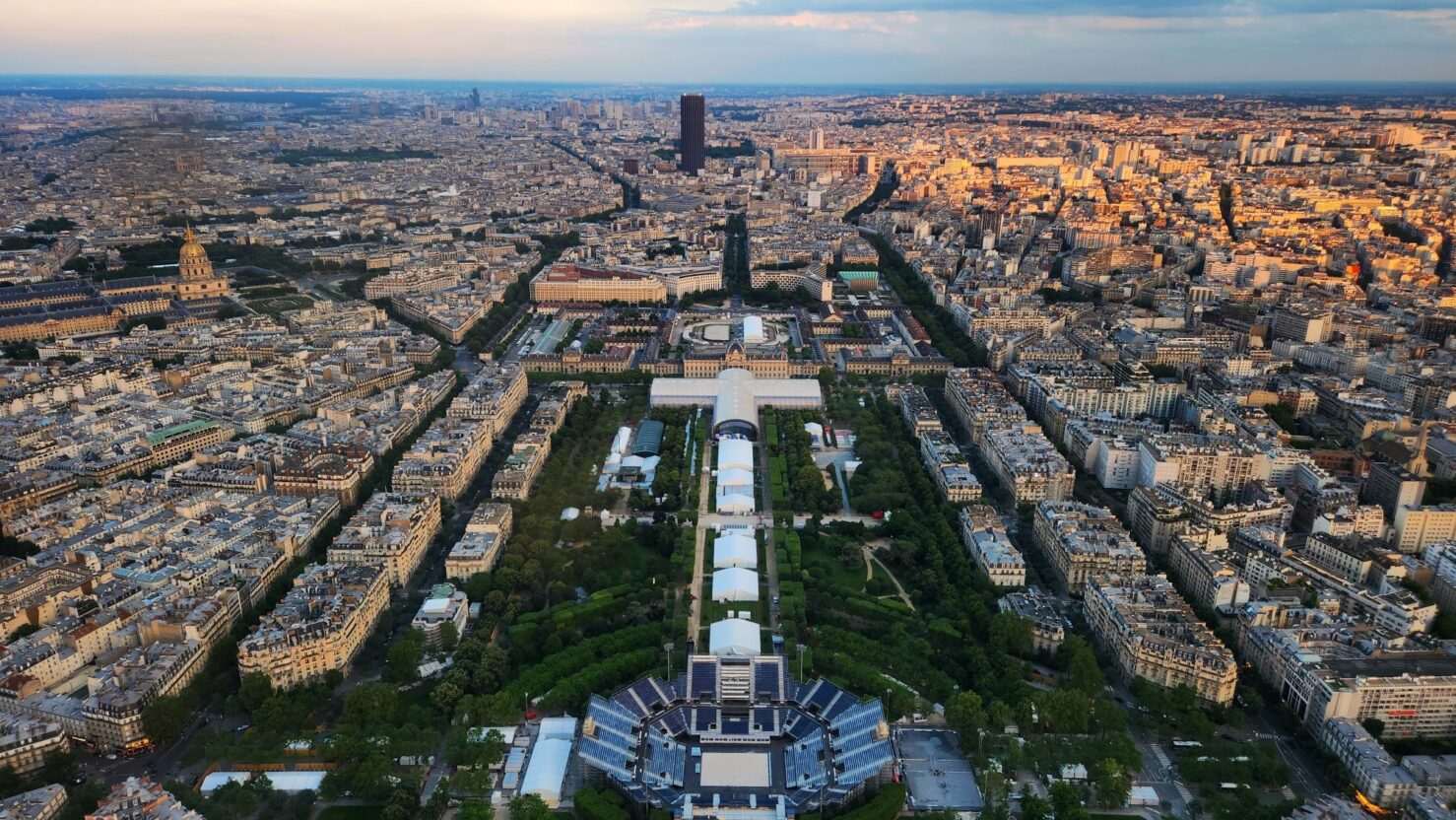
James, our tour guide had a good sense of humor and we were soon waiting in a short line to gain access to the grounds of the tower. This outer layer of security was not there in 2022 when Linda was there but appeared to be in preparation for the Olympics. Once through the metal detectors and bag checks we were then in the next line for the actual security to go into one of the entrances to the tower itself.
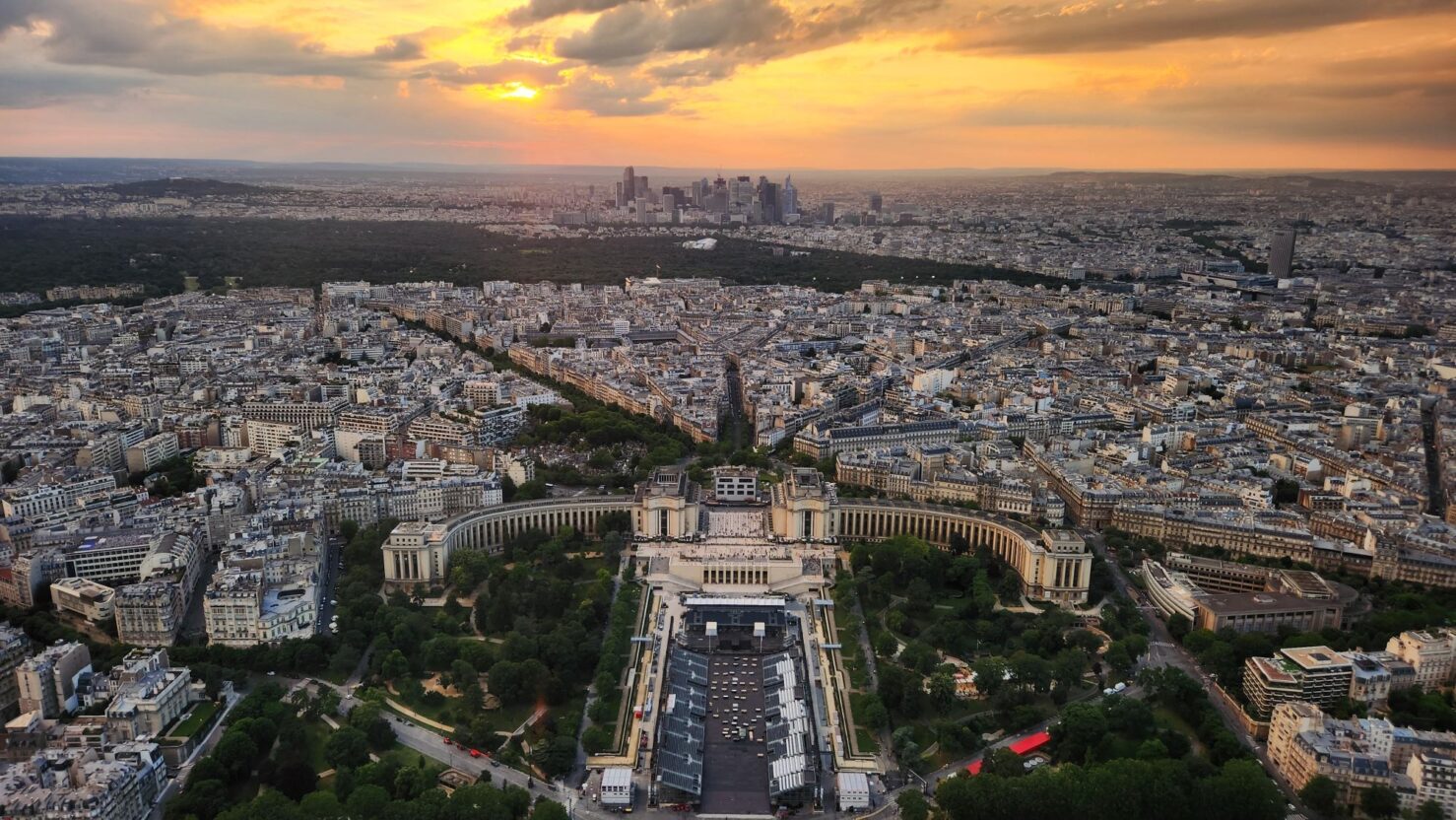
James gave a bit of history and other details regarding Monsieur Eiffel and the construction of this magnificent tribute to humankind’s ingenuity and desire to build something greater than themselves.
The Eiffel Tower has three levels with observation platforms at roughly 200, 400, and 906 feet above the ground. This tour was conducted on the 2nd level (about 200’) but the ticket allowed access to the top level accessible to the general public (906’ above ground). After James completed his presentation, we explored the highest elevation platform enjoying a glass of Champagne and the stupendous views as the light changed from early evening to dark. Utterly breathtaking.
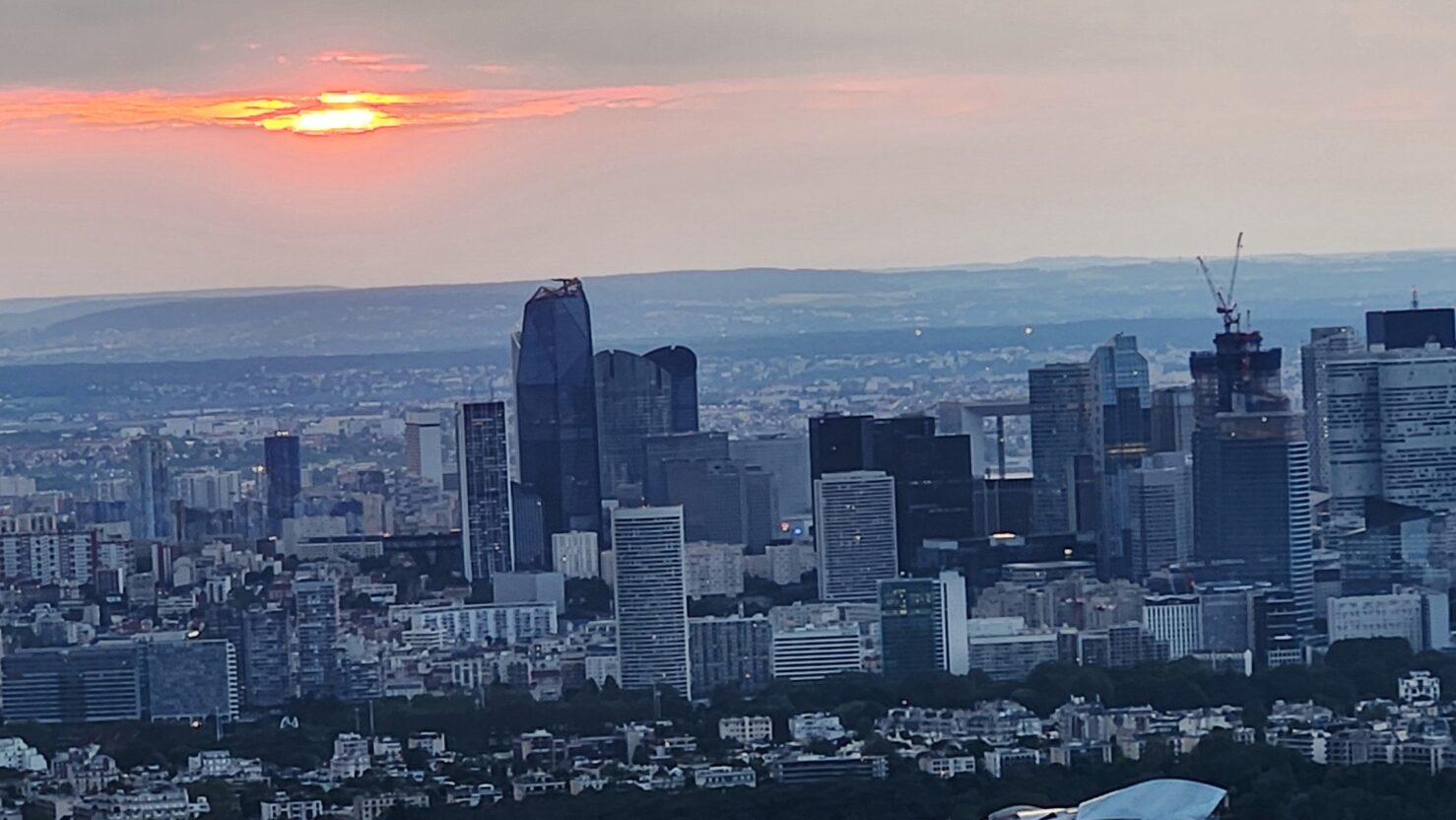
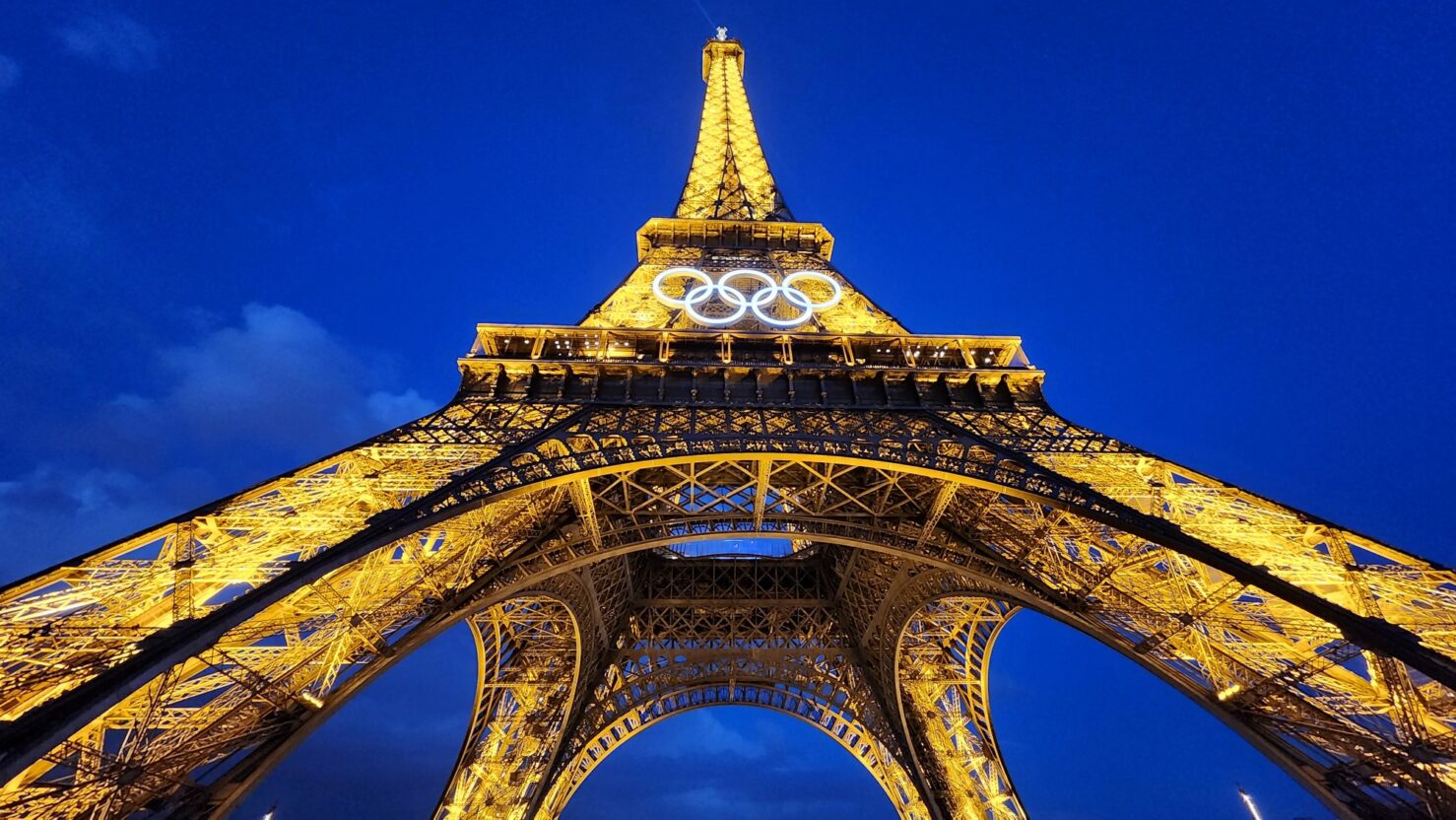
Avenue des Champs-Élysées – ‘most beautiful avenue in the world’
The Avenue des Champs-Élysées is about 2 kilometers (1.2 mi) long and 70 meters (230 ft) wide. The width alone makes the Champs very impressive. It runs between the Place de la Concorde in the east and the Place Charles de Gaulle in the west and terminates at the circle which surrounds the Arc de Triomphe. The broad boulevard on the other side of the Arc de Triomphe is the Avenue de la Grande Armée, so named in 1864 to honor the armies of the Napoleonic Wars.
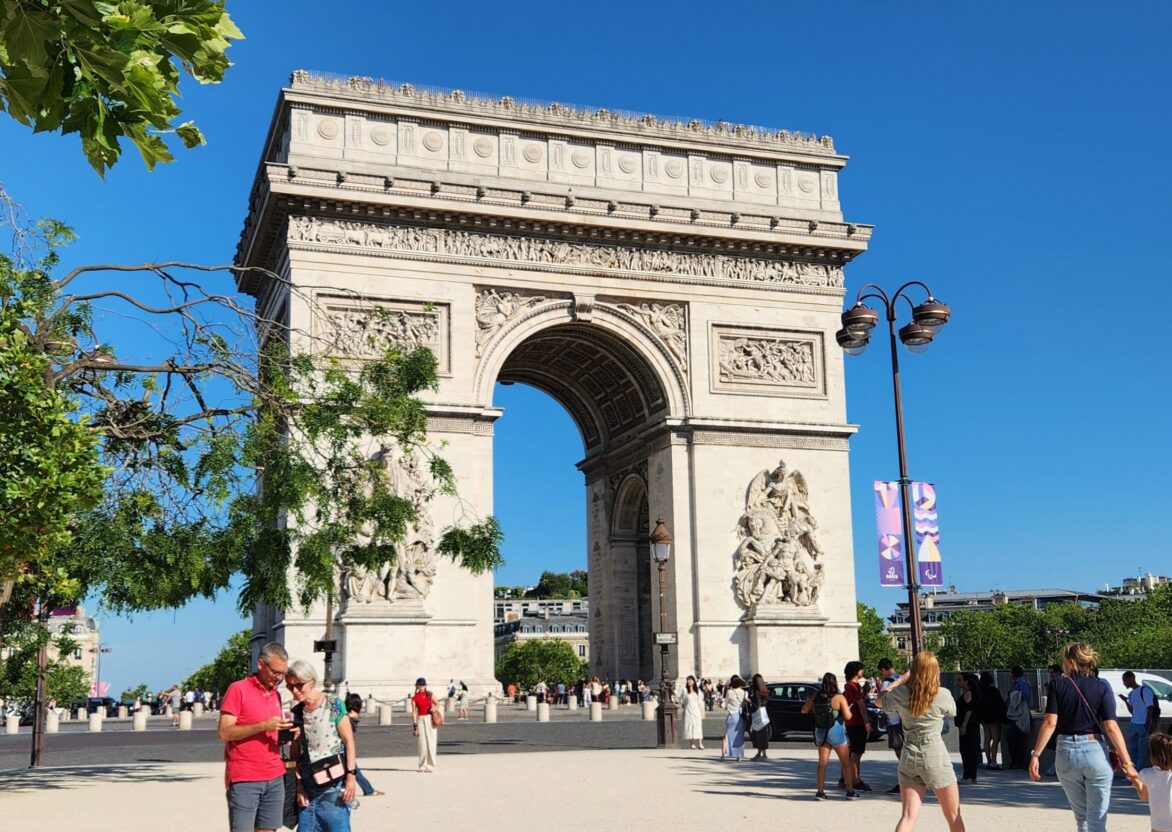
The Champs-Élysées is known for its world-famous theatres, cafés, and luxury shops, the finish line of the Tour de France cycling race, as well as for its annual Bastille Day military parade. The name is French for the Elysian Fields, the place for dead heroes in Greek mythology. It has been described as the “most beautiful avenue in the whole world”.
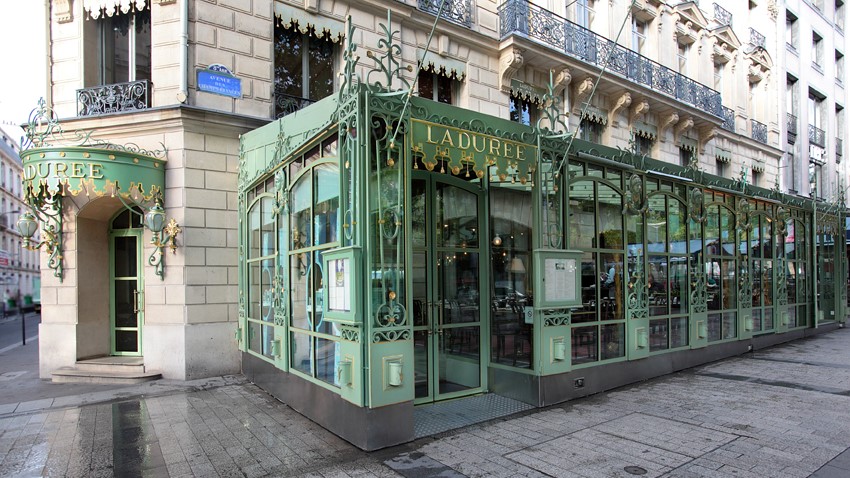
Our stroll (forced march for me) ended with the requisite visit to Ladurée, the world famous pâtisserie known for high-end pastries and candy and in particular of macarons. Established in 1862 by Louis-Ernest Ladurée. Ladurée is also well-known for its formal high-tea. We settled for a very colorful box of macarons to bring home.
Champagne – Veuve Clicquot plus two
On our third day in Paris, we boarded an early morning train to travel the 100 miles – 45 minutes east to the city of Reims (pronounced ‘rance’ by locals i.e. France without the F). We were greeted by ‘a la Franҫaise’, our tour service, who loaded us and 3 others into their mini-van.
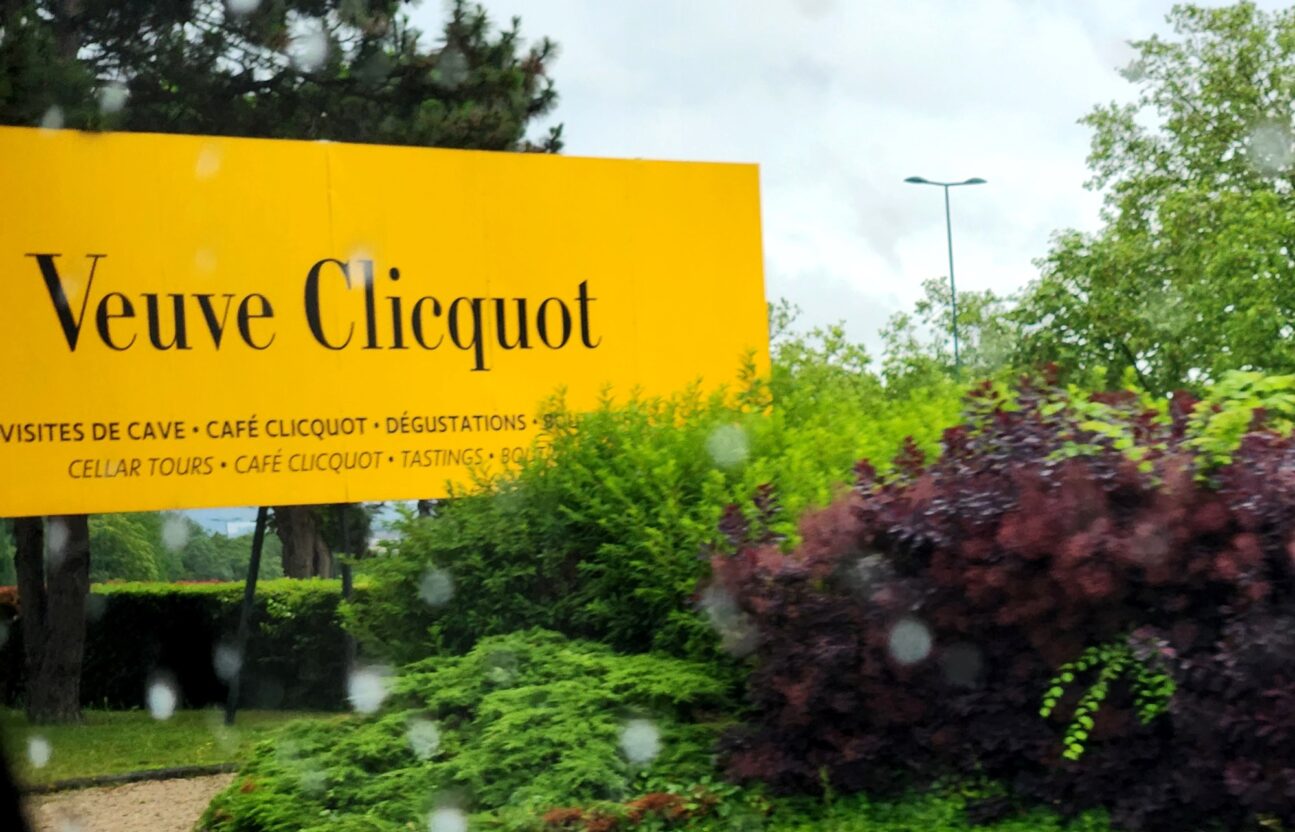
We arrived at Veuve Clicquot shortly after that. We were soon, nearly 100’ below ground, in their extravagant and extensive champagne caves. The tour by Monsieur Servine was fascinating and very educational. He explained that grape growing and winemaking in the region had begun with the Romans but that these still wines were not high quality nor as elegant as the wines of Burgundy, their competition for the wines produced from Pinot Noir, Chardonnay and Pinot Meunier. In fact, they were pinkish and cloudy and highly acidic, as the climate did not support full ripening of the grapes.
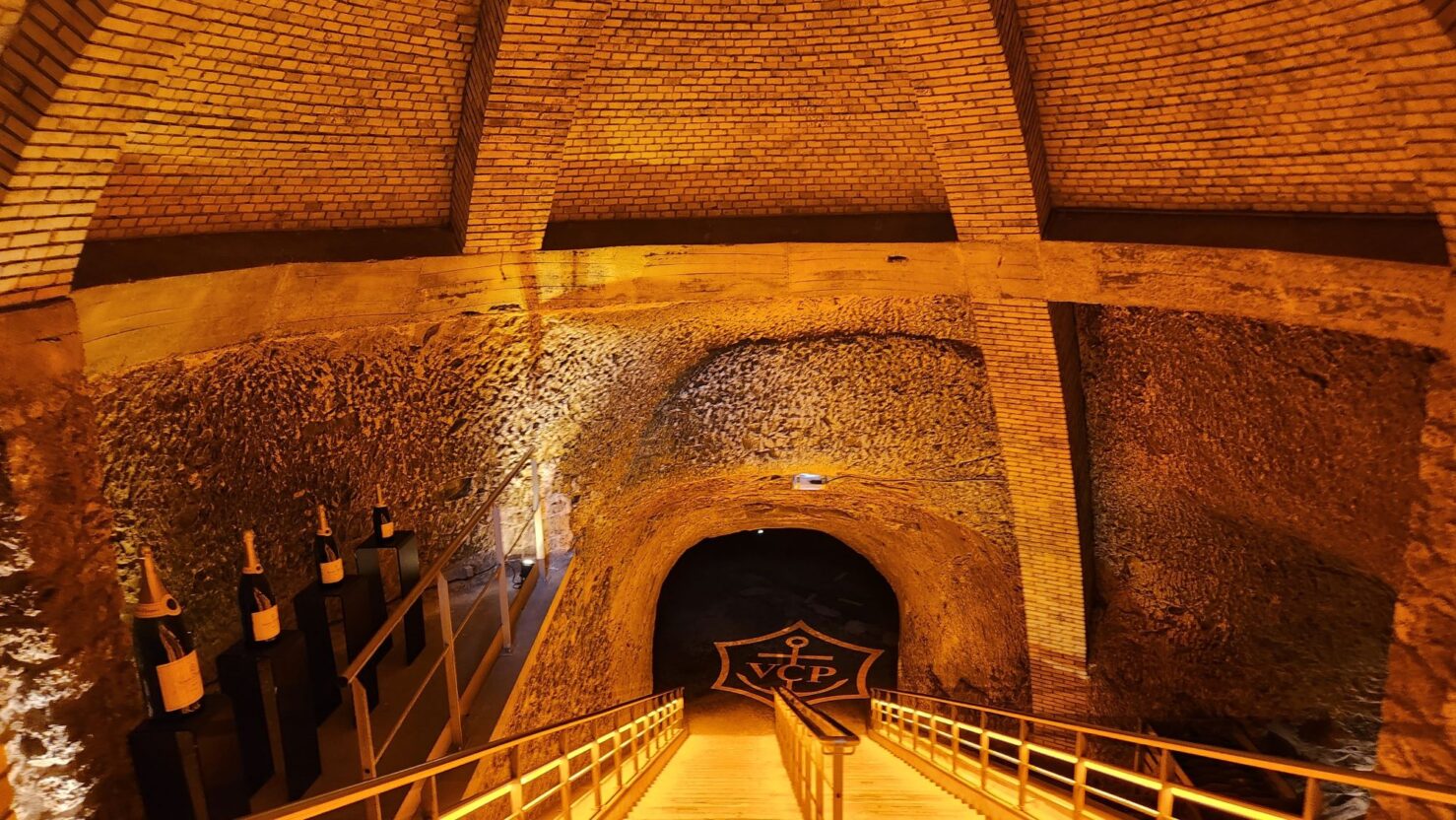
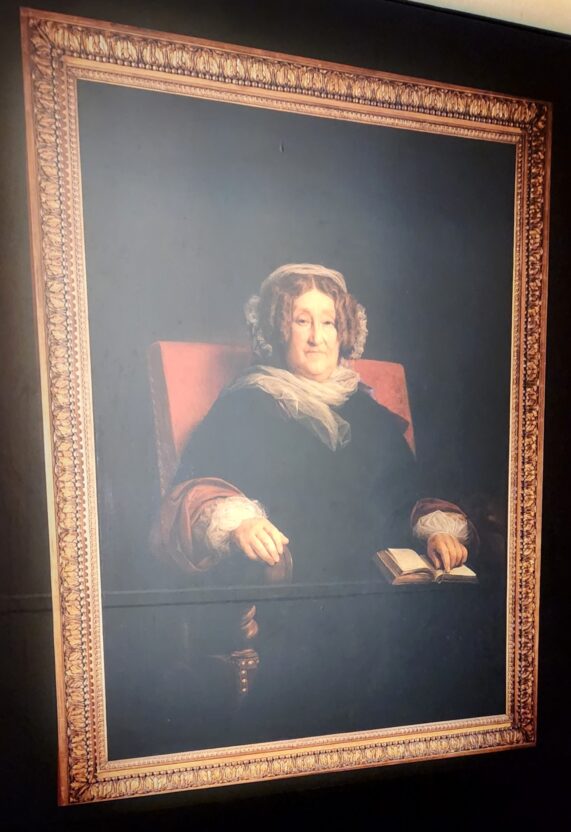
It wasn’t until the 17th and 18th centuries that the great champagne houses arose. In fact, as late as the 17th century, Champenois wine makers, most notably the Benedictine monk Dom Pérignon (1638–1715), were still trying to get rid of the bubbles in their wines which they considered a fault caused by an unwanted 2nd fermentation in bottle that frequently caused exploding glass.
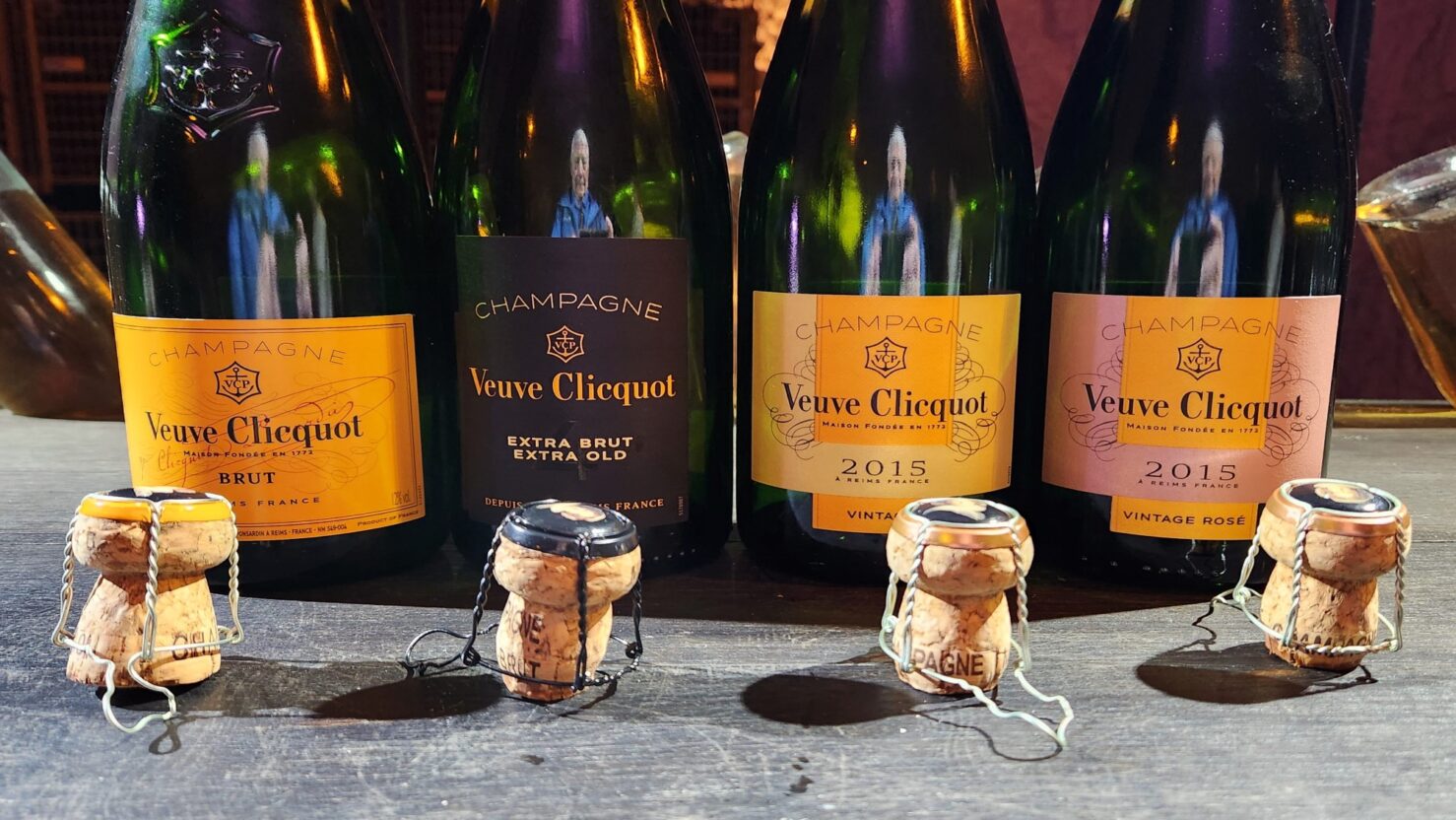
By the 19th century these obstacles were overcome, and the modern Champagne wine industry took form. Inventions and improvements by the house of Veuve Clicquot in the development of the méthode champenoise made production of sparkling wine on a large scale profitable. The veuve or widow Clicquot, with the aid of her cellar master, developed the process of riddling and disgorgement in the early 19th century to solve the problem of sediments without losing much gas. She was also the first to create a pink or rose sparkling wine. An amazing historical figure in the story of Champagne.
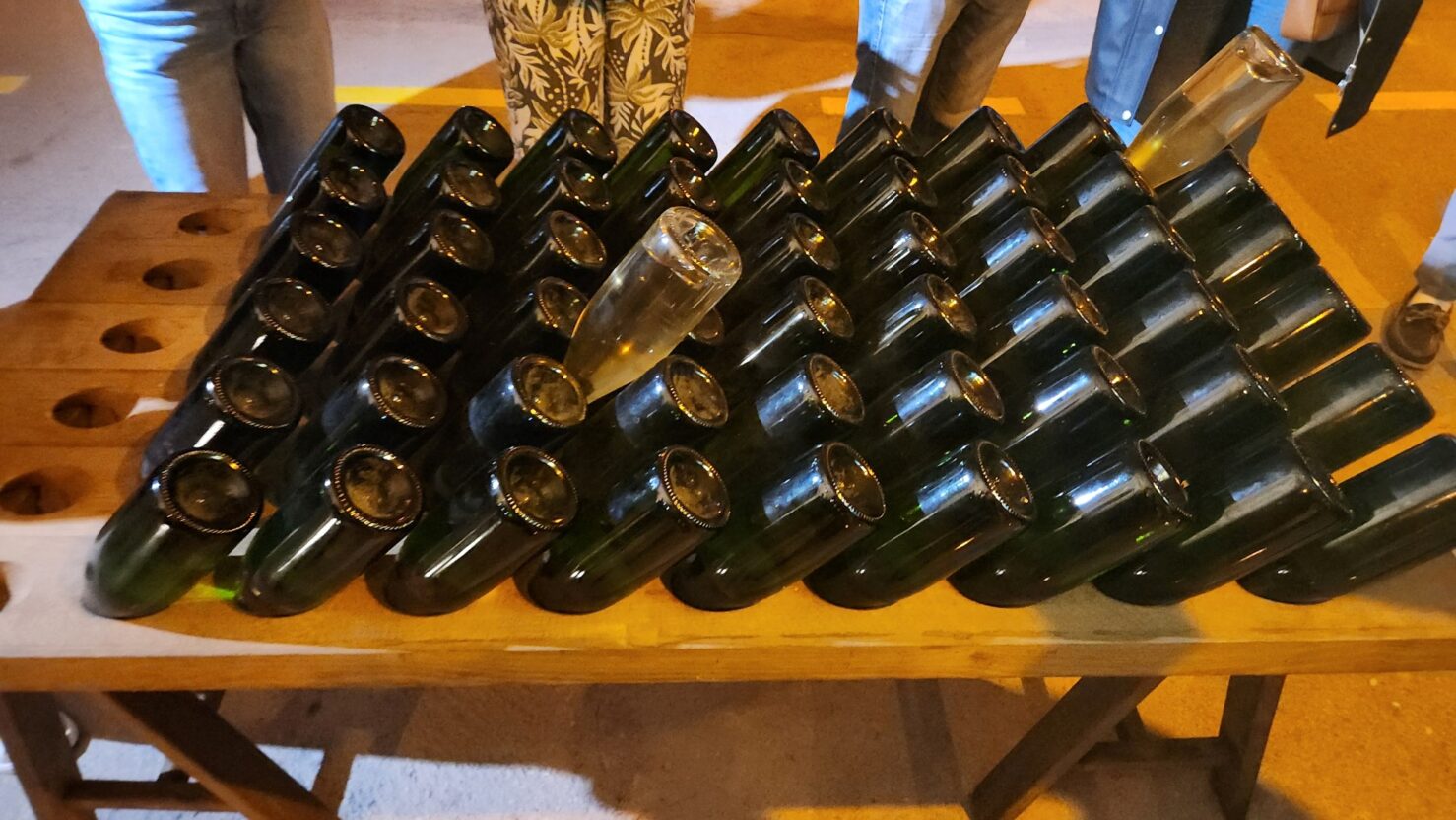
After our tour and tasting in the Veuve Clicquot caves, we emerged to visit Champagne Collard Milesi where we enjoyed another cave visit, a still wine and several sparkling wines with our delicious lunch.
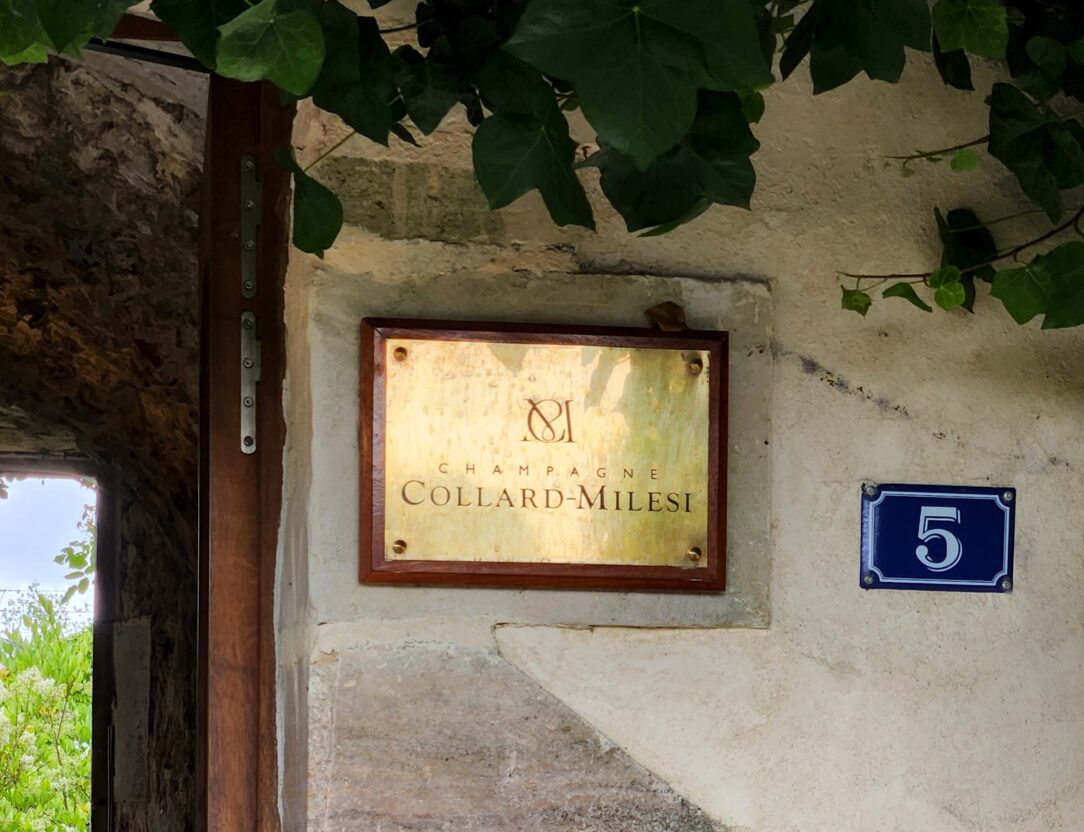
The home of Champagne Clos Corbier, from the Collard-Milesi family. The family story began in 1910, when the family moved to the Clos Corbier estate in Mareuil-sur-Aÿ. The buildings at Le Clos Corbier date back to the mid-19th century and are surrounded by vineyards. The cellars were dug in the 1850s and, although so much smaller than those at Veuve Clicquot, they were beautiful in their own right.
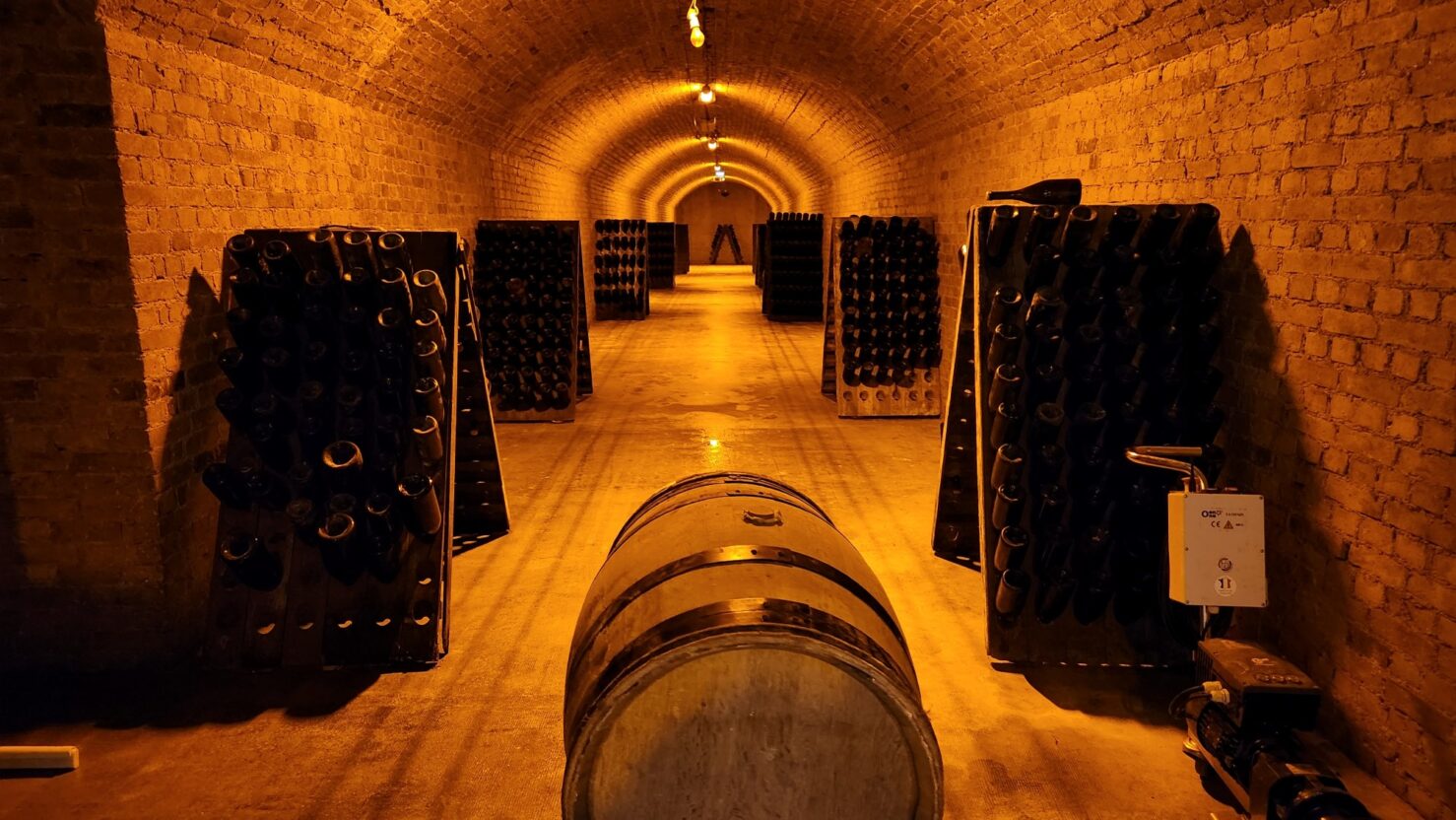
The wonderful lunch included regional specialties like pâté en croute (meat-filled pastry), Langres cheeses and other delights. The grounds were multi-tiered and offered several inviting tasting areas.
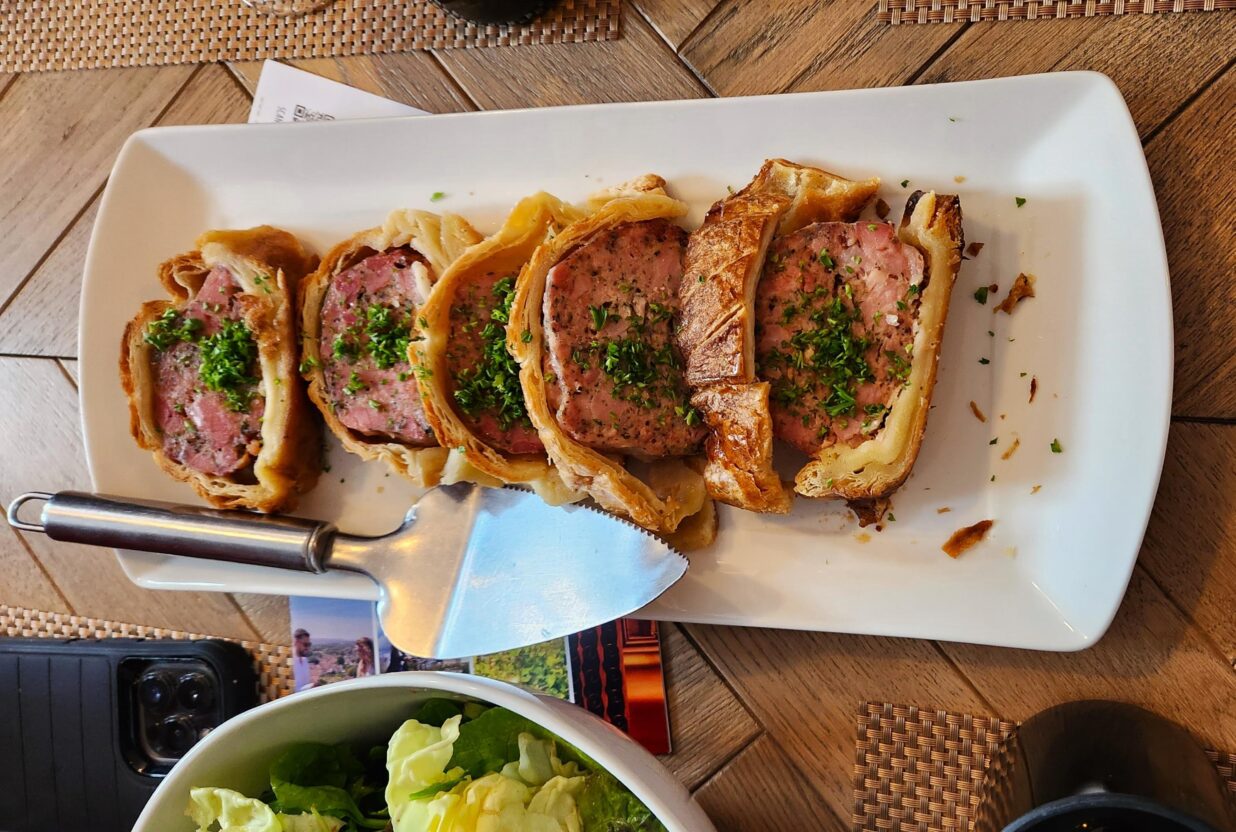
Upon our departure from Clos Corbier, we made our way to the Abbaye Saint-Pierre d’Hautvillers, where Dom Pierre Pérignon, of the acclaimed eponymous Champagne, Dom Pérignon. Pérignon was born in 1638 and at 17 became a Benedictine Monk. In 1668 Pérignon was transferred to the Abbey d’Hautvillers, where he served as cellar master for the rest of his life.
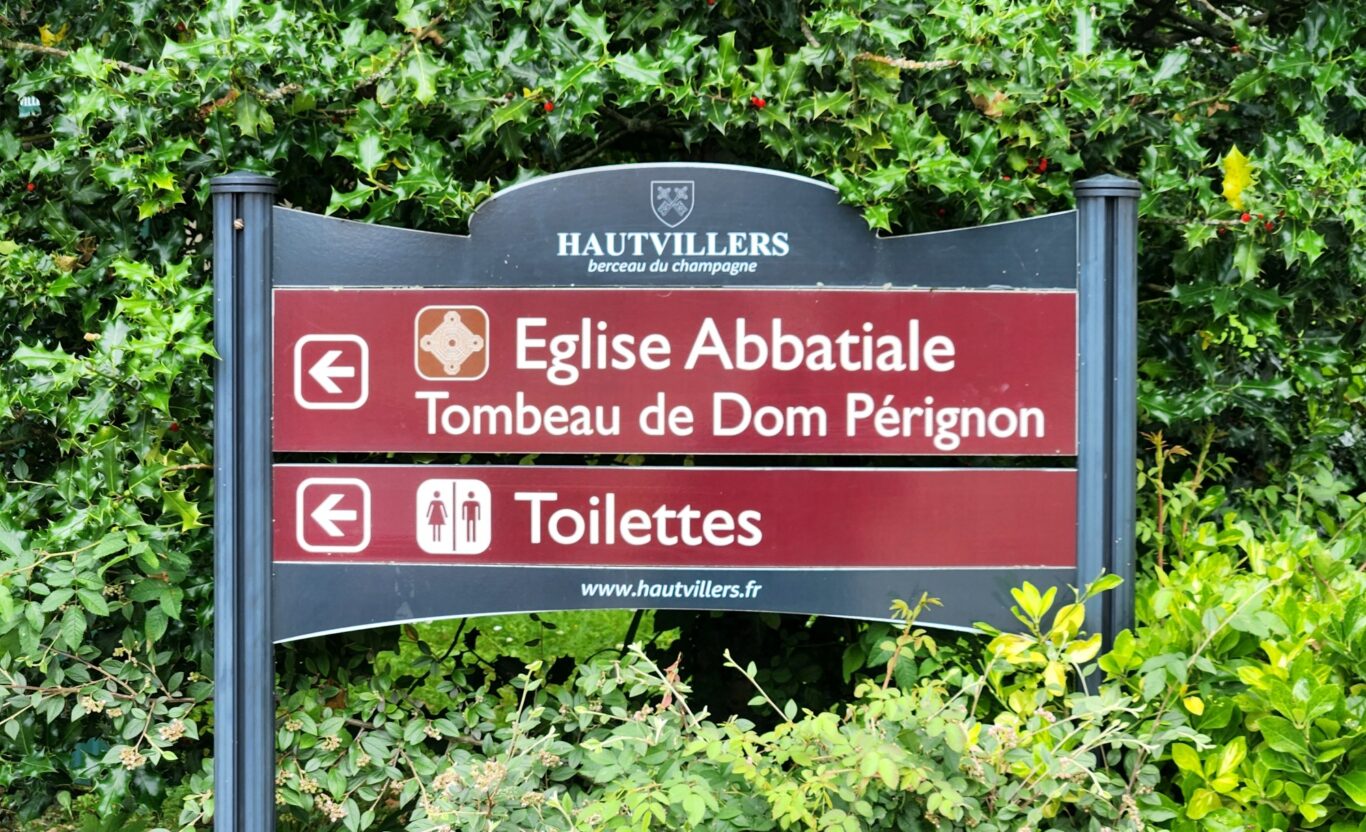
Under his astute stewardship, the abbey flourished and increased the size of its vineyard holdings. Of the many improvements that Pérignon is credited with, many untrue, he was the first to employ the combination of the strong bottles from England and thicker corks to prevent the previous explosions in many cellars. As a tribute to his importance Dom Pérignon is buried in the Abbey where he served for so many decades.
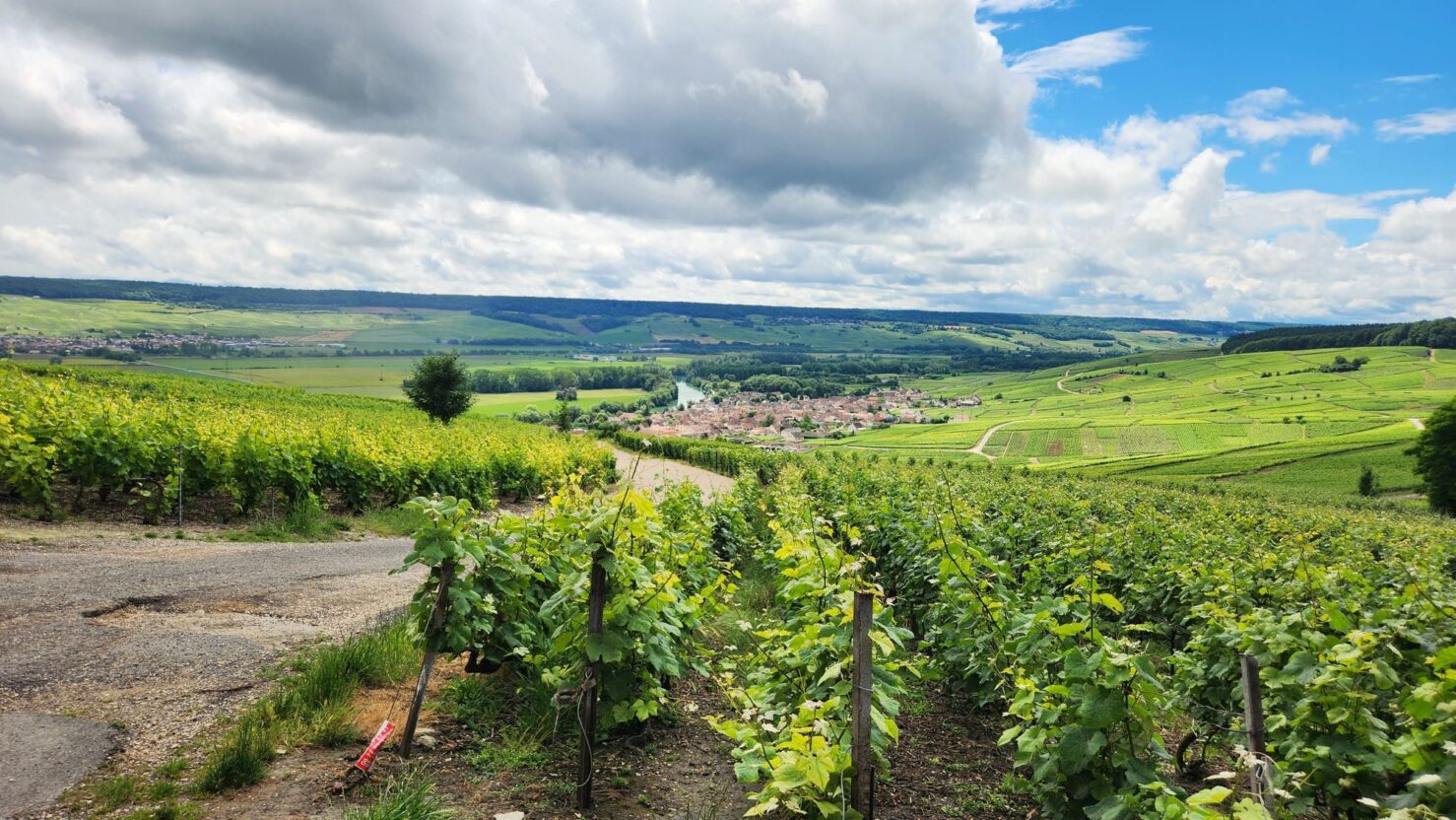
Our last stop, before returning to the train station in Reims, was a small Champagne House in Cramant, about 45 minutes from Reims, named P. Lancelot-Royer. Another multi-generational property surrounded by the family-owned vineyards. Created in 1960 by Pierre Lancelot, then resumed by his daughter Sylvie and his son-in-law Michel Chauvet, this 5-hectare property benefits from cellars in a mound of chalk, just behind the house.
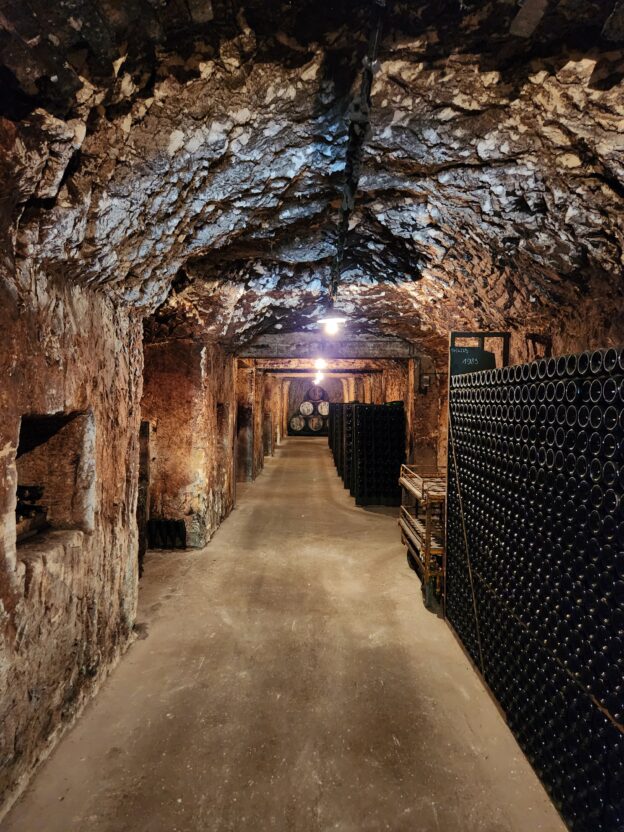
We were greeted, Chauvet’s son and third generation, Edouart, who guided us on a tour of their caves and their production operations. The vineyards were beautiful. The Chauvet family is on top of every aspect of their small production operation. The wine is wonderful and 100% Chardonnay, Champagne. P. Lancelot-Royer is one of the smallest Domaine in Champagne.
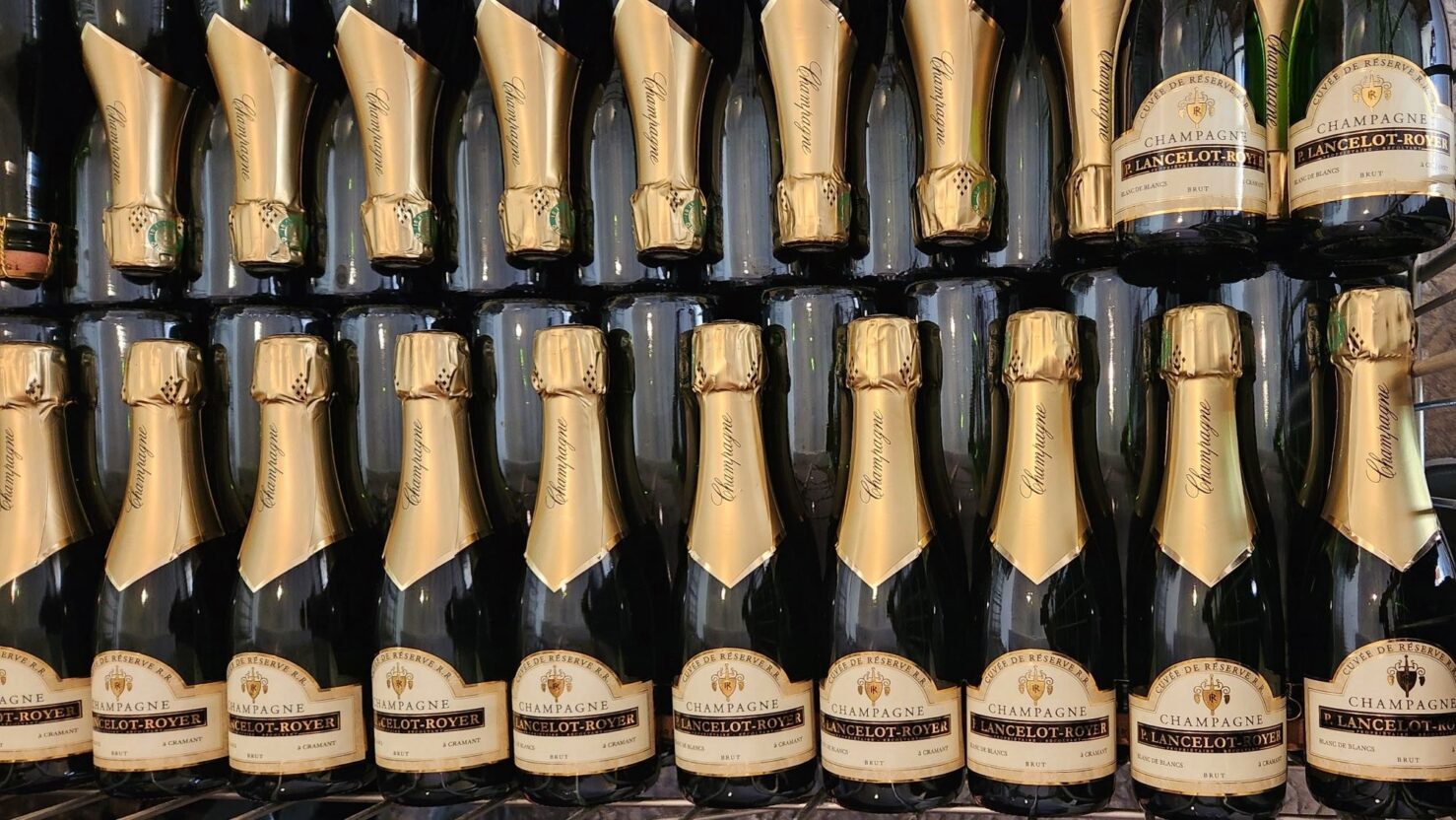
The rough chalk caves were carved out of the rock by hand with the chisel strokes evident when you run your hand over the cool waxy surface. Quite astounding.
Domaine Lancelot-Royer Champagne is one of the purest expressions of Chardonnay-based wine in the Côte des Blancs. Winemaker Michel Chauvet is one of the last artisans who chooses to craft his Champagne exclusively by hand. Michel’s wife, Sylvie, the daughter of Pierre P. Lancelot-Royer.
What a great day in Champagne!
Drawing House – Inspiring hotel dedicated to contemporary drawing
Upon returning to Paris, we grabbed a late dinner and returned to our hotel, Drawing House, located just a few steps from the Gare Montparnasse. The hotel sports 9 floors and 143 rooms on the 21 rue Vercingétorix. The dining room is modern and quite enjoyable including a small outdoor courtyard. Our room on the 8th floor was very comfortable, well-appointed and quite charming, with a small step out balcony. The Hotel also has a pool and fitness center, as well as an art gallery.
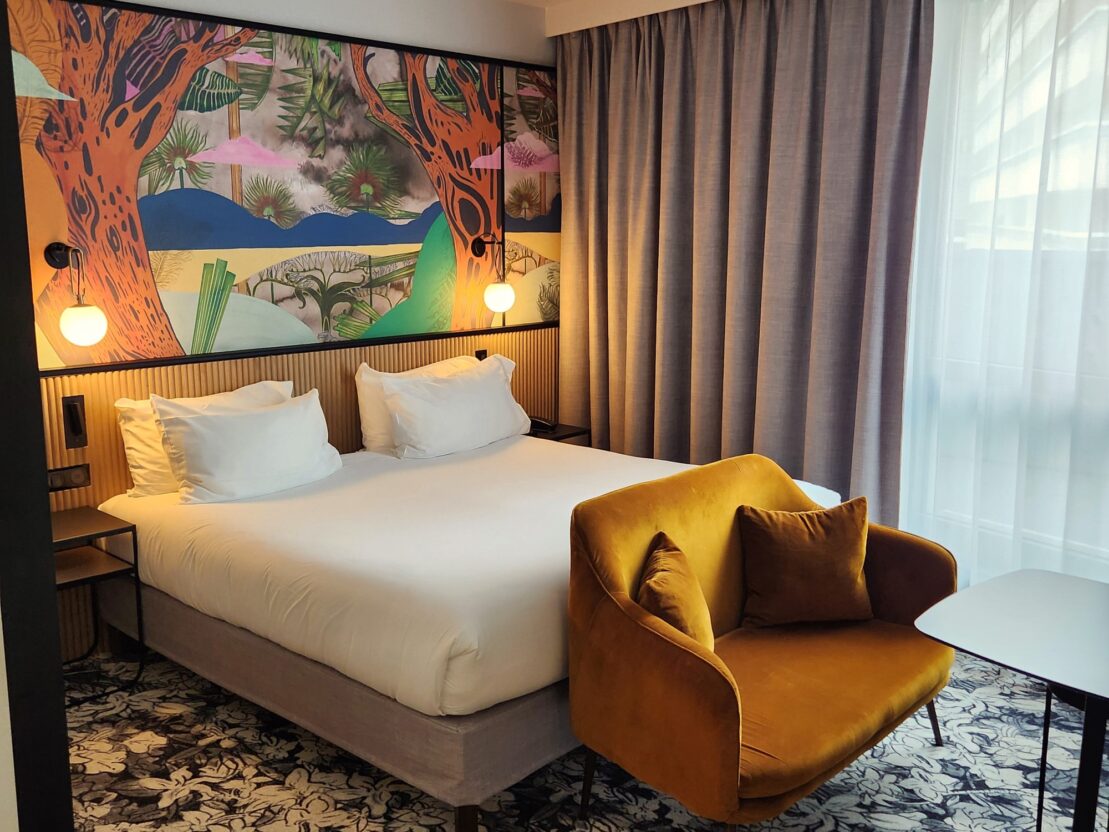
Drawing Room location close to the Gare Montparnasse and the Gaîté Metro Station makes it very well placed to get around Paris. We used the Metro to get to the Eiffel Tower, the Arc de Triomphe, the D’Orsay and the Gare d’Est Paris to catch the train to Champagne. All in all, a great location.
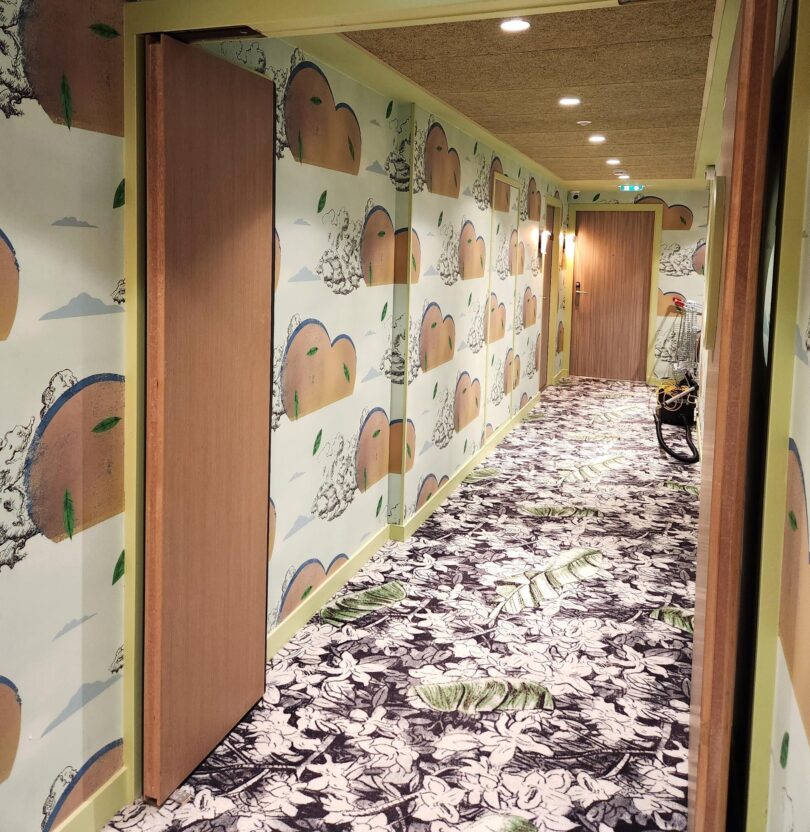
Check back for our post regarding our 5 days in Bordeaux. Coming soon.
What a fabulous article. I felt as though I was right there with you two! I so enjoy learning the history of each spot and the photos are excellent. The first time I visited the Eiffel Tower I cried.
Deirdre, Thank you so much for your kind remarks. We understand why your first visit to the Eiffel Tower was so emotional!! Cheers, John and Linda
First time I’ve been on here in a long time. Well written article John. It made me feel like I was right there alongside you and Linda. Maybe someday I will actually make it over there♥️
Thanks for reading Kathy. Its always our hope to transport our readers! 🙂